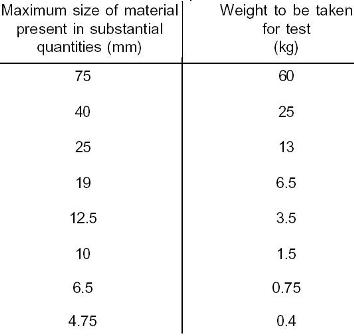The particle – size distribution (PSD) of a powder, or granular material, or particles dispersed in flui is a list of values or a mathematical function that defines the relative amount, typically by mass, of particles present according to size. Significant energy is usually required to disintegrate soil, etc. The fact that particle size distribution is dependent on principle of measurement is an extremely substantive problem arising from the very concept of particle size distribution. Innopharma develop custom PAT Technology.
Why is particle size important? Understanding and interpreting particle size distribution calculations.
.jpg)
Central values: mean, median, mode. Dynamic light scattering. Performing a particle size analysis is the best way to answer the question: What size are those particles ? Once the analysis is complete the user has a variety of approaches for reporting the result. Particle size result interpretation: number vs.
Some people prefer a single number answer —what is the average size ? More experienced particle scientists cringe when they . The population of particles in a powder, as described by its particle size distribution (PSD), affects the properties of a powder and dispersions in many important ways. For example, in industrial applications, it determines the setting time of cement.

Measuring particle size distributions and understanding how they affect your products and processes can be critical to the success of many manufacturing businesses. Malvern Instruments offers leading instrumentation for all types of particle size analysis and characterization from sub-nanometer to millimeters in particle . When presented graphically, there are two types: differential and cumulative. For measuring the distribution of particle sizes in a soil sample, it is necessary to conduct different particle – size tests.
If one integrates the differential distribu-. Dry sieve analysis is carried out on particles coarser than micron. Being able to examine each particle individually has led to microscopy being considered as an absolute measurement of particle size. Can distinguish aggregates from single particles.
Can be coupled to image analysis computers, each field can be examine and a distribution obtained. Most severe limitation of optical . The original size, spatial distribution, and composition of Portland cement particles have a large influence on hydration kinetics, microstructure development, and ultimate properties of cement-based materials. In this paper, the effects of cement particle size distribution on a variety of performance properties are explored via . Of particular interest was the potential role of sediment particle size on metal exposure and bioavailability. A major hypothesis of the work was that the size distribution of acid-extractable metals would significantly affect both organism exposure to, and toxicity of, oxic metal-contaminated sediments.
This hypothesis depends . Electrochemical double layer capacitors (EDLCs) employing ionic liquid electrolytes are the subject of much research as they promise increased operating potentials, and hence energy densities, when compared with currently available devices. Herein we report on the influence of the particle size. López Lilao A(1), Sanfélix Forner V(1), Mallol Gasch G(1), Monfort Gimeno E(1).
Author information: (1)a Instituto de Tecnología Cerámica , AICE, Universitat Jaume I , Castellón , Spain.

A wide variety of raw materials, involving more than samples of . The number and size of particles have a direct impact on the performance of pharmaceuticals and medical devices. In solid dose or emulsion based medicines, the particle size distribution and number of particles can directly affect the efficacy of the product.